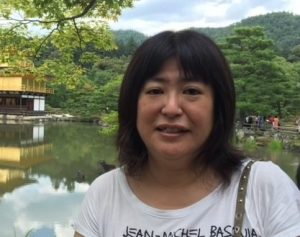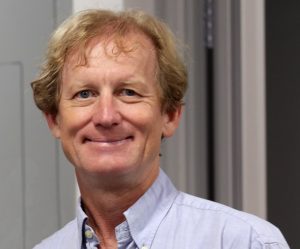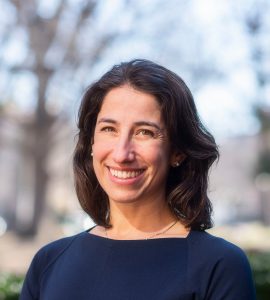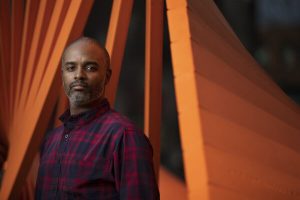The Well highlights winners of the Tanner Awards for Excellence in Undergraduate Teaching. This is the second feature of their coverage on the 2021 University Teaching Awards winners.
The Tanner awards were created in 1952 with a bequest by Kenneth Spencer Tanner, class of 1911, and his sister, Sara Tanner Crawford (and by them on behalf of their deceased brothers, Simpson Bobo Tanner Jr. and Jesse Spencer Tanner), establishing an endowment fund in memory of their parents, Lola Spencer and Simpson Bobo Tanner. The award was established to recognize excellence in inspirational teaching of undergraduate students, particularly first- and second-year students. Each of the five winners receives a one-time stipend of $7,500 and a framed citation.
Yuki Aratake

teaching professor, department of Asian and Middle Eastern studies in the College of Arts & Sciences
Excerpt from award citation: She maintains an interactive class environment where students work together in pairs or groups to write and present skits, even inviting native Japanese speakers to the class to facilitate discussions and boost students’ confidence.
Who was the best teacher you had and why?
One of my favorite learning experiences in college was a class I took about teaching Japanese language. Our university didn’t offer that course, but when I asked one of my teachers if she would be able to teach it, she took the time to put together this amazing course on language teaching methodology. It was so incredibly thoughtful of her. After I finished graduate school, I got back in touch with her and she invited me to teach Japanese language with her! I owe her so much and am forever grateful for her generosity, her kind spirit and her support as a mentor.
What does it take to be a good professor in 2021?
Among the best faculty on our campus are those who make the extra effort to provide course content that engages students and motivates them. It is not just a matter of teaching content, but of helping students be their best selves, so that when they graduate they are prepared for the challenges they will face and opportunities to be leaders in their careers and communities.
Tell us a story about something creative you’ve done to engage your students.
One of the courses that I have really enjoyed is the class I designed on Japanese food and culture, which I’ve been teaching since 2008. Students learn in the class about everyday Japanese cooking while making meals in the campus kitchen and talking about their experiences in Japanese. They get so involved in the process that they often forget they are engaged in academics. Not only do they learn how to prepare Japanese food and better understand the role of food in Japanese culture, they start talking about it while they’re cooking. They get to eat their creations as well, a win-win for everyone!
Richard Goldberg

teaching associate professor and director of undergraduate studies, department of applied physical sciences in the College of Arts & Sciences
Excerpt from award citation: Goldberg encourages creativity and critical thinking. When his students push themselves to solve problems that once seemed impossible, they call their success “The Goldberg Effect.” One student wrote, “This method has taught me how to problem-solve in many other areas of life. His ability to stay calm even when the outlook of the situation does not immediately appear bright is inspiring.”
Who was the best teacher you had and why?
Several people who had a big influence were my undergraduate senior design advisers at Bucknell University, Susan Smith-Baish and Jim Baish, and my doctoral adviser at Duke University, Steve Smith. Among many other things, they taught me how to turn my curiosity into new ideas, how to recover from failure (the fatal flaw!), and how to communicate my ideas, both in writing and in presentations. I try to pass along these attributes to my students today.
What does it take to be a good professor in 2021?
In the past year, we have definitely learned that we need to be nimble, as we quickly adapted our courses and teaching styles for remote learning. We also need to stay current with the growing body of educational research. Among other things, this research tells us that to keep students motivated, a professor needs to engage them in the classroom and to frame the material so that students see its relevance. Finally, we need to be compassionate, especially in a year like this one, as students are facing a host of real challenges in their personal and family lives.
Tell us a story about something creative you’ve done to engage your students.
With remote learning this year and students going stir crazy on Zoom all day, I have created additional interactive opportunities in my classes, so that students are engaged with each other for most of the class time, rather than listening (or not listening) to me. These have involved breakout rooms where students work in small groups. For example, they may answer questions on a shared online worksheet, do a research activity and then collaborate for a group presentation to the class, or brainstorm ideas using an interactive online whiteboard. I plan to continue these activities in person when classes return to “normal,” which will hopefully be soon!
Elizabeth Havice

associate professor, department of geography in the College of Arts & Sciences
Excerpt from award citation: Utilizing the state-of-the-art technology and design of Greenlaw 101, Havice was able to engage each of the 100 students in the room and help them work together on big problems. As one student put it, “Dr. Havice had a way of making a classroom of 100 feel like 10. I knew she was there to ensure that the whole class benefited from our time in the course, but I also felt that she was personally invested in my growth.”
Who was the best teacher you had and why?
Ms. Mertz, fourth grade. Her curiosity about the world was contagious; all of the students could see it in the sparkle in her eyes. It was as if her classroom had no walls. She invited us to explore and trusted a bunch of scrappy kids to make the most of it.
What does it take to be a good professor in 2021?
Flexibility! Compassion. Willingness to try new things to make connections across screens. And as always, approaching learning as an ongoing, collaborative and unfolding process.
Tell us a story about something creative you’ve done to engage your students.
I get so excited when I have an idea that will enable students to activate concepts and build skills to understand the world and their experiences in it — and in the process to work toward their future personal and professional goals. Teaching often is thought of as individual work, but I come up with the best plans for engaging students by collaborating with my brilliant colleagues in the geography department including faculty, graduate students and undergraduate students (seriously, these are some creative, innovative teachers; come and try our classes!). Participating in learning communities across campus, such as the IAAR-Slate (Student Learning to Advance Truth and Equity) program and Center for Faculty Excellence programs and tapping into support and resources from the Office of Undergraduate Research enables me to transform a little idea into a big innovative project that brings the classroom experience to life.
Recently, Dr. Amy Cooke (E3P) and I secured support from the Office of Undergraduate Research to support an interdisciplinary group of six students to research the future of sustainable food on campus. This work built from an ongoing collaboration with Carolina Dining Services to audit procurement for compliance with sustainability commitments. The students developed and conducted a stellar research program, wrote a report and presented recommendations to Carolina Dining Services and multiple high-level representatives in campus operations. Based on this work, we are working on a journal article cataloging Carolina’s experience and identifying insights for large campuses seeking to use third party certification to progress in food system sustainability. The students and Carolina Dining Services are passionate about sustainable food systems, so it has been a wonderful collaboration underwritten by a joint commitment to using the campus food system as a mechanism for positive change.
Frank Leibfarth

assistant professor, department of chemistry in the College of Arts & Sciences
Excerpt from award citation: Students are inspired by the connections Professor Leibfarth draws between polymer chemistry and products encountered in daily life. In advanced polymer chemistry courses, Leibfarth brings in plastic products and helps the students discover the underlying chemistry used in their manufacture.
Who was the best teacher you had and why?
Richard Anderson, my 12th grade literature teacher. His combination of enthusiasm, rigor and constructive feedback was unmatched. He saw what I could become rather than what I was, and he pushed me to reach my potential. I kept in touch with him long after I left high school, up until his untimely passing a few years ago.
What does it take to be a good professor in 2021?
I find the key to being an effective educator right now is striking the right balance between high expectations and compassion. Students at Carolina don’t shy away from a challenge. When you are holding students to the highest standards, however, you must couple those expectations to an acknowledgement of collective events (i.e. a pandemic) and individual hardships. Clearly communicating your expectations while also meeting your students, both collectively and individually, where they are builds trust in the classroom and creates a productive learning environment that meets the needs of a diverse population of learners.
Tell us a story about something creative you’ve done to engage your students.
This year I incorporated a new teaching method into my “lecture” course that uses primary literature as a way to teach, demystify and humanize scientific advances. The high structure approach I adopted is much different from just giving students a primary literature article to read. We went over each section of the paper (introduction, experimental results, discussion, conclusions) iteratively and stopped at each point to ask students how they would approach the study, what experiments they would run and what results they would expect. Students discussed these questions in Zoom breakout rooms and populated shared documents with their answers, which allowed the whole class to compare and contrast numerous strategies that ultimately may converge on the same solution. I found this teaching method to be a great way to expand how students interacted with the content of the course. Instead of simply taking in information, students were using the content they learned to confirm or refute the hypotheses that they identified in a real-life research study. Students were actually thinking like a scientist rather than just thinking about science. I enjoyed teaching these classes much more than a more traditional lecture, and the students gave the experience high praise in their post-course evaluations.
Brian Taylor

assistant professor, department of biology in the College of Arts & Sciences
Excerpt from award citation: It is also clear from the nominations that Dr. Taylor supports students beyond the classroom. One student said, “Dr. Taylor introduced me to the wide-ranging path of quantitative modeling and all that it could accomplish, and now I am excited to start a graduate program that leaves paths open outside of academia, such as in industry and government.”
Who was the best teacher you had and why?
This is hard because I’ve been fortunate to have several good teachers. The best teachers showed empathy and patience in terms of learning the material (Chris Butler of Case Western Reserve — calculus), broke things down in a way where even the most difficult concepts were approachable and understandable (Dr. Edward White of Texas A&M — aerodynamics) and provided opportunities to see how and why the things I learned were important and actually applied (Dr. Peter Archer — childhood trumpet teacher and longtime friend).
What does it take to be a good professor in 2021?
The best word I can think of is empathy. Trying to connect with people on a human level and meet them where they are. My ultimate goal is to let people know that they are not alone. By letting people know that I am human and stand with them, I hope to make various topics more approachable, less daunting and maybe even fun! For example, after reviewing the course policies in my classes, I talk about the times that I’ve faced life-altering adversity, and then flat out ask people to reach out for help if they run into any issue that could impair their learning. In my classes and my research lab, I share my experiences, including the difficulties I’ve encountered with different topics, and ways to overcome them.
Tell us a story about something creative you’ve done to engage your students.
I asked one of my personal doctors to give a guest lecture to my Mathematical Methods for Quantitative Biology class. I told my class my story of the medical events that led to me being her patient, and then followed up her guest lecture with a unit on robotics in medicine, as part of her lecture went over delivering treatments using a robotic platform. Many of the students in the class want to go into health care related fields, and I’m always looking for ways to demonstrate the applications of what we cover. I figured that the best person to hear from is someone who is using topics related to the class on the front lines of medicine. The class seemed to enjoy it. Two students even ended up doing internships with my doctor and one of her colleagues!

